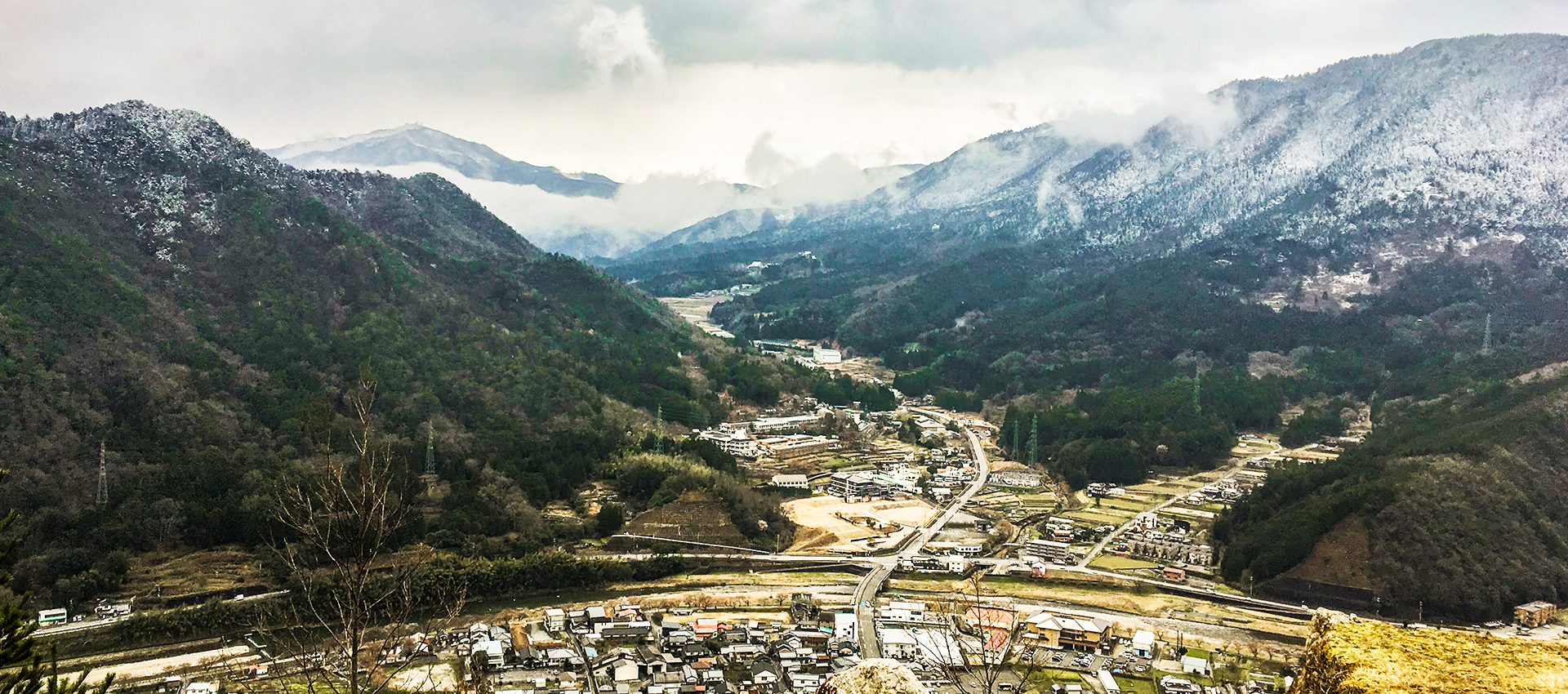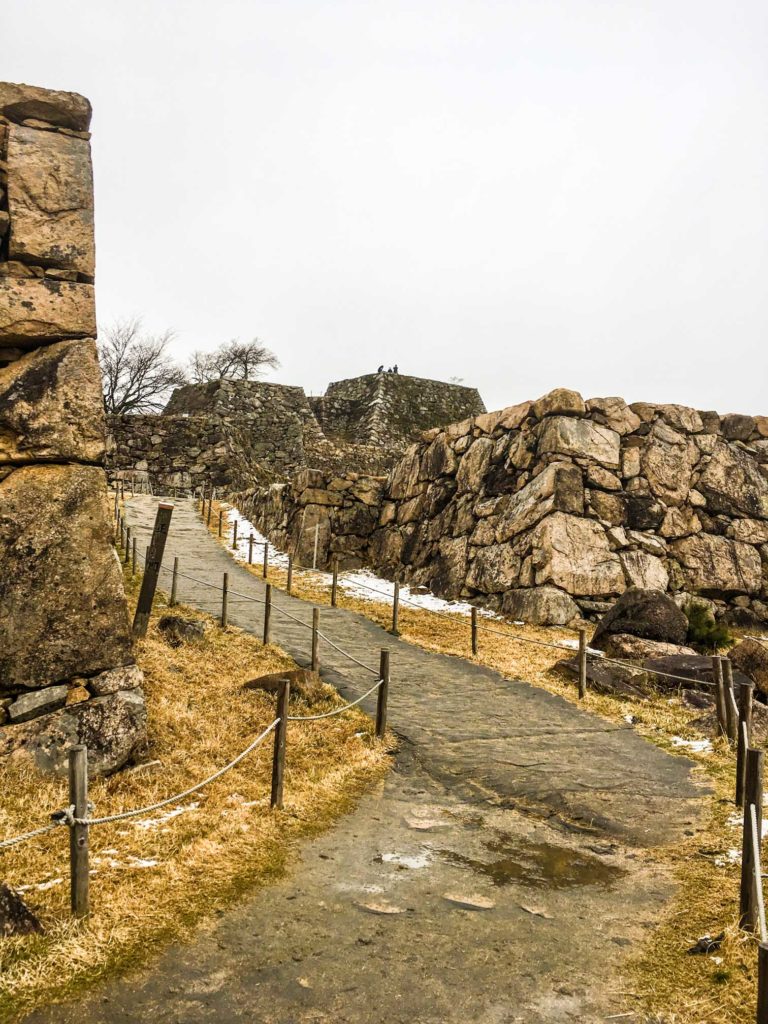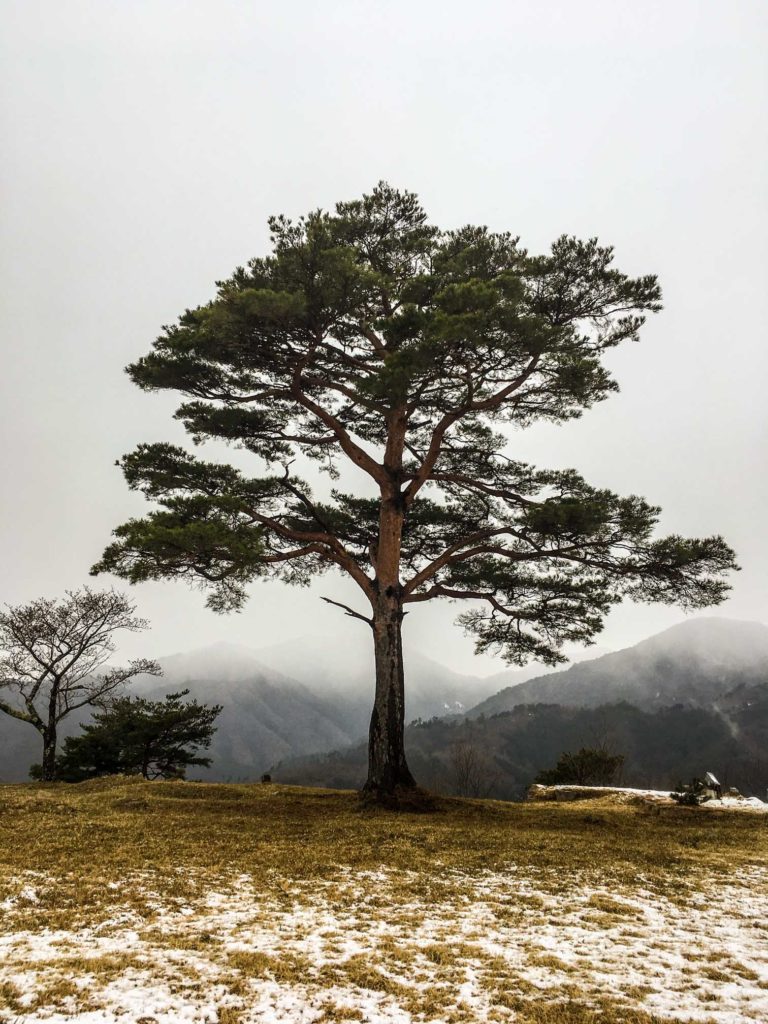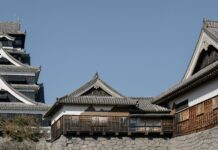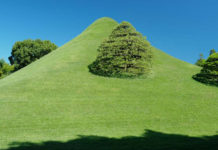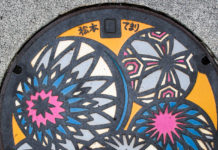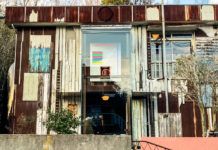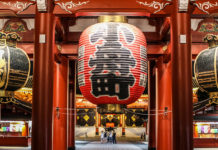You may have already seen pictures of Takeda Castle. It’s Japan’s “Castle in the Sky”. In the autumn and early winter, the surrounding valley fills with mist, making it appear as if Takeda Castle is floating among the clouds. Together, the fog, moss, and ruins create an achingly melancholic, romantic scene. And it’s these same factors that make visiting it in person such a deeply moving experience. If you’re visiting Japan, Takeda Castle will offer you a glimpse into the romance and sadness of Japan’s tumultuous Warring States period.
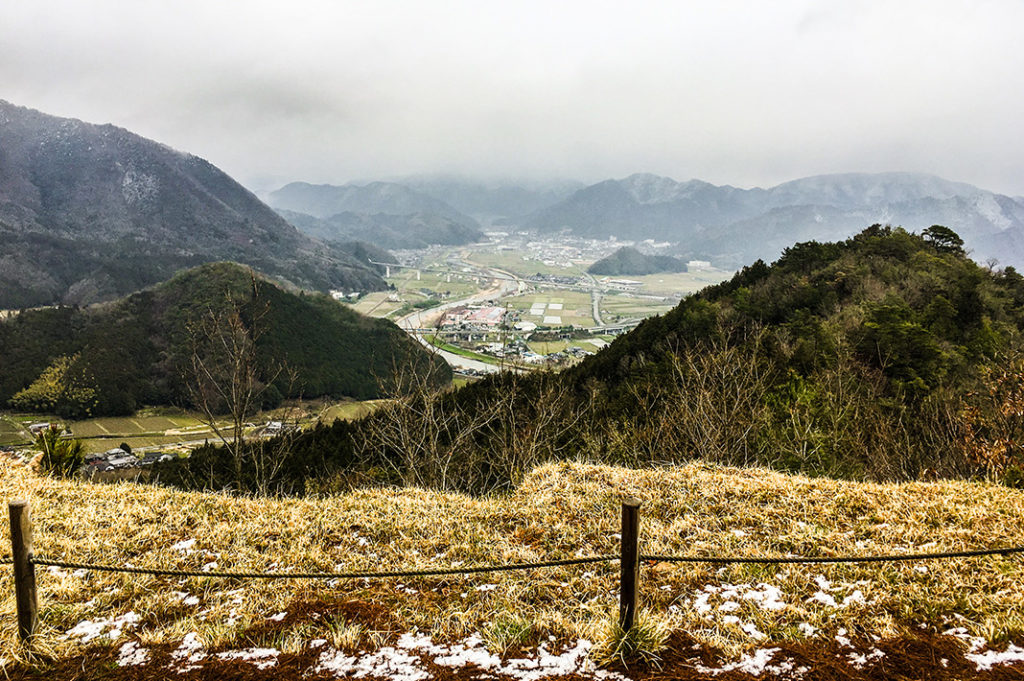
When to See the Castle in the Sky
Unfortunately, like all good things, the mist doesn’t last forever. In order to catch the best views of Takeda Castle, you’ll want to rise early and be in position just as the sun rises. In good conditions, the mist will linger for a few hours; however, it will almost always dissipate by the late morning. The best months are from September to December. However, the grounds usually close in January and February due to snow and ice. We can’t blame them. It’s best to avoid the combination of tourists and tall, slippery things.
The History of Takeda Castle
Takeda Castle was designed to offer clear, militaristic views of the surrounding valleys and mountains. And it certainly succeeded. Originally, it was constructed by military leader Yamana Sozen in the mid-15th century. Its stonemasons were of an unusually high calibre. The castle’s foundations consist of entirely uncut, painstakingly slotted together rock. Allegedly, these stonemasons could “hear” exactly where each stone wanted to go.
Later, Takeda Castle was conquered by Hasbia Hidenga as part of a campaign to unify Japan. After which, it passed to Akamatsu Hirohibe, who committed ritual suicide after his side lost the Battle of Sekigahara in 1600. After Hidenga’s death, the castle was abandoned. These days, all that remains of the castle are its stone foundations—a testament to the site’s master stonemasons.
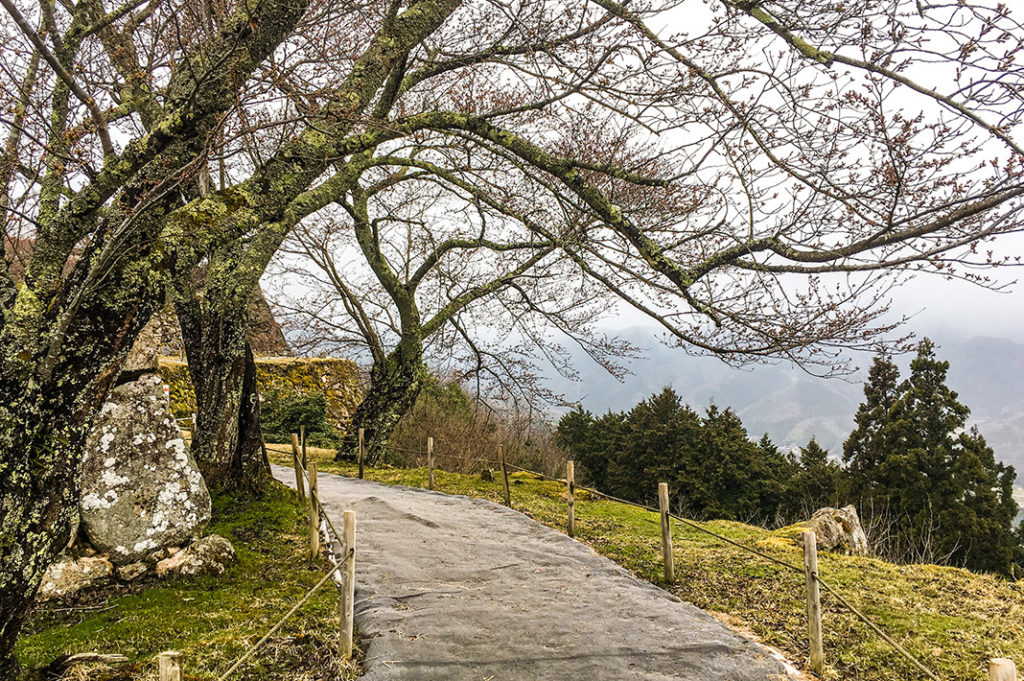
How to See the Castle in the Sky
There are two ways to see Takeda Castle. To see it in its iconic rising-from-the-mist pose, you’ll need to gain some distance and head to the nearby Ritsuunkyō observation points. However, to actually walk through the ruins, you’ll have to climb (or ride) up to Takeda Castle itself. It’s best to spend the night in nearby Asago city or Takeda town and catch an early taxi or train to your destination. Takeda Castle brings many tourists to Asago, so it’s likely that your accommodation may have additional information about how to reach the Castle.
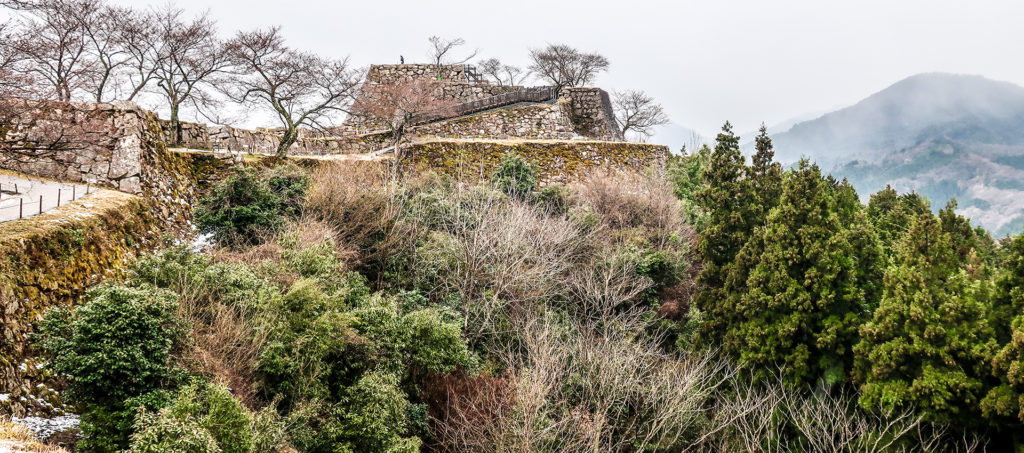
The Observation Points: Ritsuunkyō
If you’d like to reach the observation points, prepare for a somewhat steep trek. The observation points are all along a hiking trail that leads up to the 756-meter peak of Mount Asago. That said, the first observation point is just a few minutes from the Ritsuunkyō parking area. The other two are roughly 30 minutes farther along the trail each. Understandably, the best view is from the highest observation point.

Takeda Castle Trails
To reach Takeda Castle itself, you’ll have a couple of different options to chose from. Those wishing to be time-efficient can either take the Tenkū Bus (or a taxi) to the Chūfuku Parking Lot and then complete a relatively easy, short walk up to the Castle. For those who want to get in some hiking (and really appreciate all the hard work that must have gone into storming and capturing the castle) there are a number of hiking trails up to the ruins. The two best trails are the Ekiura trail and the Hyomai Shrine trail, which both take about 40 minutes to complete. The Ekiura trail is the most popular and starts just behind Takeda Station. Meanwhile, the Hyomai Shrine trail begins just a little ways away from the station and will bring you through a charming mountain shrine at its base.

Regardless of whichever way you chose to enjoy it, Takeda Castle is an enchanting experience that shouldn’t be missed.
Name: Takeda Castle
Address: 669-5252 Hyogo, Asago, 169 Takeda Kojoyama, Wadayamacho
URL: https://www.oyadohakusan.com/en/hanatei/takedajyo/index.html
Post by Japan Journeys.



